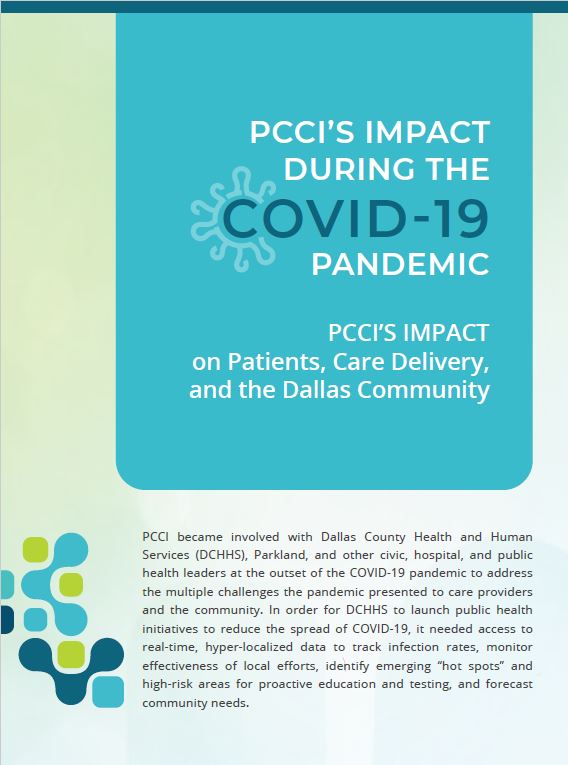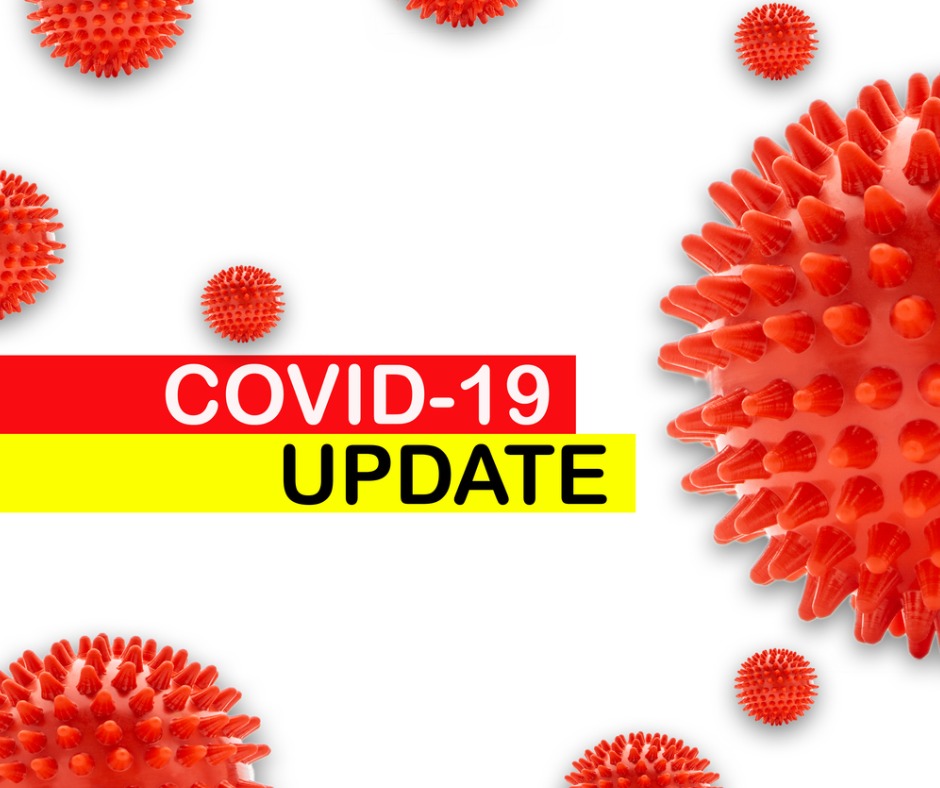DALLAS – Dallas County saw a massive 66 percent reduction in risk values recorded by PCCI’s COVID-19 Vulnerability Index in February, with some of the most vulnerable ZIP codes showing significant reductions.
One of the hardest hit ZIP Codes, 75211, which includes the areas around Cockrell Hill and Oak Hill, saw its vulnerability risk value drop by 151.9 points, going from 196.9 vulnerability rating in January to 44.9 in February. The 75211 ZIP code remains the second most at risk area in Dallas County, however its overall improvement is a positive sign for the hard-hit area.
 “The dramatic drop in the county’s vulnerability is positive and offers a hopeful path going forward,” Thomas Roderick, PhD, Senior Director of Data and Applied Sciences at PCCI. “We are remaining cautious as we saw vulnerability rates come down
“The dramatic drop in the county’s vulnerability is positive and offers a hopeful path going forward,” Thomas Roderick, PhD, Senior Director of Data and Applied Sciences at PCCI. “We are remaining cautious as we saw vulnerability rates come down
last summer only to see increase significantly later. The key to continued reduction of vulnerability is ongoing vigilance, including continued adhering to local health official guidance, social distancing, face covering, and registering for vaccinations as soon as you’re able.”
Launched in June of 2020, PCCI’s Vulnerability Index identifies communities at risk by examining comorbidity rates, including chronic illnesses such as hypertension, cancer, diabetes and heart disease; areas with a high density of populations over the age of 65; and increased social deprivation such as lack of access to food, medicine, employment and transportation. These factors are combined with dynamic mobility rates and confirmed COVID-19 cases where a vulnerability index value is scaled relative to July 2020’s COVID-19 peak value. The PCCI COVID-19 Vulnerability Index
can be found on its COVID-19 Hub for Dallas County at: https://covid-analytics-pccinnovation.hub.arcgis.com/.
In addition to the drop in 75211, the ZIP code 75204, in east downtown Dallas, saw a 104.4 drop in its vulnerability ratings. ZIP code 75224, in southern Dallas, saw a drop of 64.9 in its vulnerability ratings, but now is ranked as the most vulnerable area in Dallas County with a vulnerability value of 45.87. Also, the ZIP code 75227, in east Dallas County intersected by State Highway 12, is the third most vulnerable area in Dallas with a 42.45 value, though it dropped 70.5 in its vulnerability ratings since January.

“Holidays and events are potential super-spreader events,” said Dr. Roderick. “We are in a time of year where these tend to
be limited, which impacts ongoing COVID-19 cases. However, Spring Break and occasional holidays on the calendar represent potential trouble times. PCCI will continue monitoring for things that can push Dallas County into higher levels of vulnerability.”
PCCI recently forecast that Dallas County may reach COVID-19 herd immunity by mid-June. This, Dr. Roderick points out, is only possible though vaccinations.
“We each need to be patient as well as register and receive our COVID-19 vaccination,” said Dr. Roderick. “The only way we will reach herd immunity is by maintaining our vigilance and getting vaccinated. Reaching herd immunity is a community effort and should be a priority for each of us.”
PCCI recently launched the MyPCI App, another program to help inform the residents of Dallas County to their individual risks. The MyPCI App, free to register and use, is a secure, cloud-based tool that doesn’t require personal health information and doesn’t track an individual’s mobile phone data. Instead, it is a sophisticated machine learning algorithm, geomapping and hot-spotting technology that uses daily updated data from the Dallas County Health and Human Services (DCHHS) on confirmed positive COVID-19 cases and the population density in a given neighborhood. Based on density and distances to those nearby who are infected, the MyPCI App generates a dynamic personal risk score.
To use the MyPCI App, go to, https://pcci1.wpengine.com/mypci/, click on the link and register (Using code: GP-7xI6QT). Registration includes a request for individual location information that will be used only for generating a risk assessment, never shared. Once registered, simply login daily and a COVID-19 personal risk level score will be provided along with information to help individuals make informed decisions about how to manage their risk.
Data Sources:
To build Vulnerability Index, PCCI relied on data from Parkland Health & Hospital System, Dallas County Health and Human Services Department, the Dallas-Fort Worth Hospital Council, U.S. Census, and SafeGraph.
About Parkland Center for Clinical Innovation
Parkland Center for Clinical Innovation (PCCI) is an independent, not-for-profit, healthcare intelligence organization affiliated with Parkland Health & Hospital System. PCCI leverages clinical expertise, data science and Non Medical Drivers of Health to address the needs of vulnerable populations. We believe that data, done right, has the power to galvanize communities, inform leaders, and empower people.
###



 “With the major 2020 holidays concluded, over the next several months we can see the return to daily life on the horizon,” said Thomas Roderick, PhD, Senior Director of Data and Applied Sciences at PCCI. “With ongoing vigilance, including continued adhering to local health official guidance, social distancing, face covering, and registering for vaccinations as soon as you’re able, we can anticipate that the recent high case counts are behind us.”
“With the major 2020 holidays concluded, over the next several months we can see the return to daily life on the horizon,” said Thomas Roderick, PhD, Senior Director of Data and Applied Sciences at PCCI. “With ongoing vigilance, including continued adhering to local health official guidance, social distancing, face covering, and registering for vaccinations as soon as you’re able, we can anticipate that the recent high case counts are behind us.”











 PCCI’s Vulnerability Index indicates that the increases are driven by high mobility levels (people leaving their homes) during Thanksgiving and an increase in confirmed cases. PCCI
PCCI’s Vulnerability Index indicates that the increases are driven by high mobility levels (people leaving their homes) during Thanksgiving and an increase in confirmed cases. PCCI



 Since 2014, the Parkland Center for Clinical Innovation (PCCI) has led an effort to bring together several large healthcare systems and a number of regional social-service organizations such as food banks, homeless assistance associations, and transportation service vendors, along with over 100 smaller CBOs (i.e., neighborhood food pantries, crisis centers, utility assistance centers) and area faith-based organizations to form the Dallas CCC. Over time, civic organizations, such as the Community Council of Greater Dallas, Dallas County Health and Human Services (DCHHS), and select academic institutions have begun to participate in various community-wide projects under the Dallas CCC umbrella. Central to the success of the Dallas CCC are the partnerships that have been formed between the CBOs and a number of local healthcare systems (Parkland Health & Hospital System [Parkland], Baylor Scott & White Health, Children’s Medical Center, Methodist Health System, and Metrocare Services), clinical practices, and other ancillary healthcare providers serving the Dallas metroplex. These partnerships have proved essential in building a truly comprehensive and functional network aimed at improving both the health and well-being of Dallas residents.
Since 2014, the Parkland Center for Clinical Innovation (PCCI) has led an effort to bring together several large healthcare systems and a number of regional social-service organizations such as food banks, homeless assistance associations, and transportation service vendors, along with over 100 smaller CBOs (i.e., neighborhood food pantries, crisis centers, utility assistance centers) and area faith-based organizations to form the Dallas CCC. Over time, civic organizations, such as the Community Council of Greater Dallas, Dallas County Health and Human Services (DCHHS), and select academic institutions have begun to participate in various community-wide projects under the Dallas CCC umbrella. Central to the success of the Dallas CCC are the partnerships that have been formed between the CBOs and a number of local healthcare systems (Parkland Health & Hospital System [Parkland], Baylor Scott & White Health, Children’s Medical Center, Methodist Health System, and Metrocare Services), clinical practices, and other ancillary healthcare providers serving the Dallas metroplex. These partnerships have proved essential in building a truly comprehensive and functional network aimed at improving both the health and well-being of Dallas residents. About the author
About the author